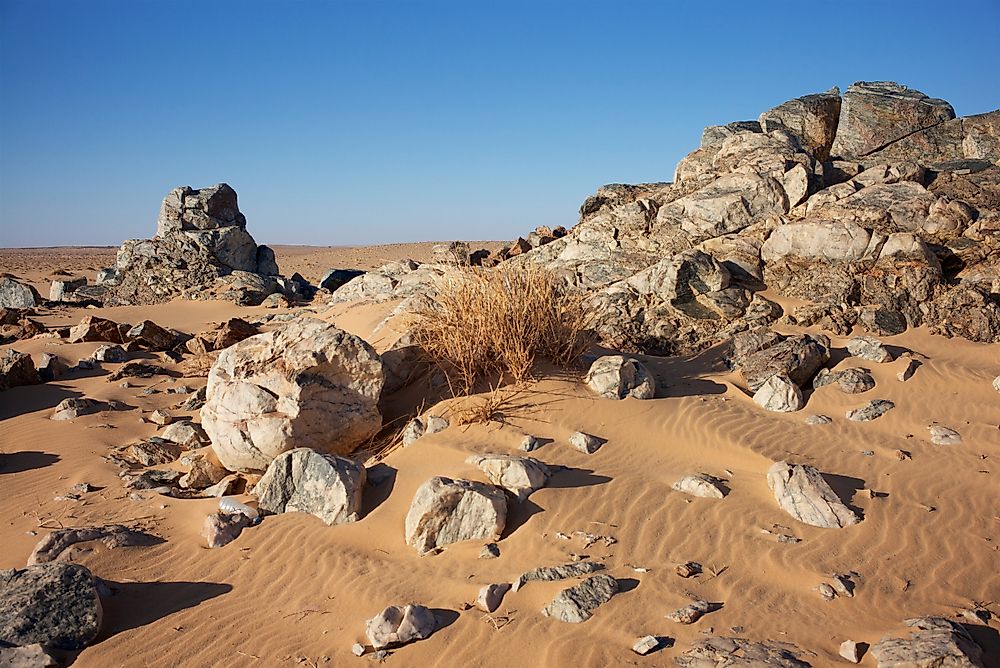What Are The Biggest Industries In Mauritania?

Mauritania is a sovereign state located in the northwest part of Africa, and it is the 11th largest on the continent which shares its borders with Algeria, Senegal, and Mali. The country also has a coastline running along the Atlantic Ocean. About 90% of the country's land area lies within the Sahara, and most of the population is concentrated mainly on the southern part of the country where it receives relatively higher precipitation.
In 2018, Mauritania had a nominal GDP of $14.3 billion and GDP based on purchasing power parity of $29.99 billion. In the same year, the country ranked as the 126th with the highest nominal GDP in the world the 129th highest GDP on purchasing power parity. Some of the most important industries in Mauritania include agriculture, mining, fishing, and oil, among others.
Agriculture
Mauritania lies in the Saharan and Sahelian zones, which are arid regions, and the country has one of the poorest agricultural bases in the western part of Africa. The most critical economic activity in the rural areas have been the livestock, and between 1975 and 1980 herding has been the main economic activity for about 70% of the population while 20% of the population were engaged in sedentary farming. The largest part of the population lives in the southern 1/3 of the country where precipitation is relatively higher and can sustain herding of livestock. Farming in the country has been restricted to a narrow strip running along the Senegal River where precipitation averages about 24 inches annually and the flooding of the river which is experienced annually sustains crop production and raising of animals.
Mining
The mining industry in Mauritania has been dominated by mining of iron ore and beneficiation. Other significant mineral commodities mined in the country include gold, copper, Gypsum, cement, salt, and petroleum. In 2007, exports of iron ore were valued at $575 million which was about 38% of the total exports in the country, and copper exports were valued at $184 million which represented 14% of the country's total exports. Similarly, crude oil exports in the country were valued at $339 which were approximately 23% of all exports, while gold was valued at $59 million which was approximately 4% of the country's total exports.
Copper
The first commercial exploitation of copper in Mauritania began in 2006 when the Canadian company, First Quantum Minerals Ltd, produced the first concentrates of copper from the Guelb Moghrein mine. The mine is found in the Inchiri area close to the Akjoujt town, which is about 155 miles to the northeast of the Nouakchott city. The mine was anticipated to have a production capacity of about 30,000 metric tons annually of copper concentrate by the first half of the year 2007, but by the time it was producing 23.7 metric tons which were slightly lower than the projected output. The First Quantum Minerals Ltd has 80% ownership of the mine, and the Guelb Moghrein Mines D’akjoujt SA holds 20% ownership. In 2014 the mine produced 33,079 metric tons of copper which were a slight drop from the 2013 production which stood at 37,970 metric tons.
Petroleum
Petroleum was first produced in Mauritania in 2006 at Chinguetti oil field. A consortium of several companies owned the oilfield, and they include the Hardman resources Limited, Bg group Plc, Roc Oil Limited, Premier Oil plc, Woodside Petroleum Ltd, and Société Mauritanienne de Hydrocarbures, which is owned by the government of Mauritania. The production from the oil field was anticipated to average about 75,000 barrels in a day, and the first 1 million barrels from the oilfield were shipped to China. The oil reserves in the oil field were estimated to be about 120 million barrels. There were other companies from China, the UK, and Australia doing exploration in different parts of Mauritania for oil, and so far there have been significant discoveries of oil, particularly in the offshore area.











